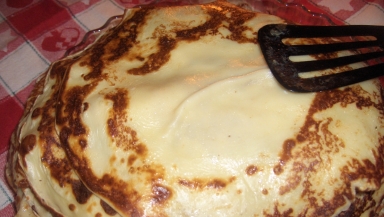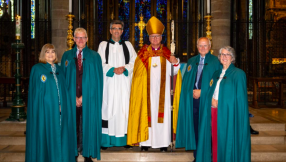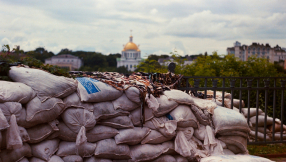
The supermarkets have had bags of sugar, flour and squeezy lemon bottles out for the last couple of weeks. Where there's a religious festival, there's a marketing opportunity. But what's it all about?
Pancake Day is really Shrove Tuesday, the day before Ash Wednesday when Lent begins and we think about what we might have given up if we'd thought about it in time. But our British version of the 'carnival' – from the Latin for 'farewell to meat' – is a pale and feeble thing, even with maple syrup, compared to the weird and wonderful variations on Mardi Gras around the world.
If you live in parts of Spain and Latin America, for instance, the chances are that you will follow a funeral procession through the streets of your city. A priest and a grieving widow will accompany the coffin, everyone dresses up in black and the whole thing is very affecting. There is something fishy about the corpse inside the coffin, though. It is in fact a sardine, and the festival is El Entierro de la Sardina – the burial of the sardine. The dead fish (or a likeness of one) is solemnly carted around the streets. Men sometimes dress up as weeping women, with mantillas covering their faces. It is supposed to be a symbol of the passing of the carnival season and the beginning of a time of sadness and devotion, though what the connection is precisely it is difficult to say. Ireland has a similar custom, the Festival of the Herring.
Russians know how to party, too. They have Cheesefare Week, also known as Maslenitsa, Butter Week, or Pancake week. It is celebrated during the seventh week before Easter. Russians eat blinis made of butter, eggs and milk, but there's more to Cheesefare than that. It also includes snowball fights and sleigh rides, and in some parts of the country a different tradition is observed on each day; so one day is for young men to visit their mothers-in-law, for instance. The mascot of the celebration is usually a brightly dressed straw effigy of Lady Maslenitsa. At the end of the week, on Sunday evening, Lady Maslenitsa is stripped of her finery and burned on a fire. The ashes are then buried in the snow to fertilise the crop.
Greeks have Clean Monday (Kathari Theftera), seven weeks before the Greek Easter. It is a national holiday and marked in various ways in different parts of the country. One of the most popular is kite flying. Another is to make a doll out of paper or biscuit, with seven legs, one for each week of Lent. The doll has no mouth, as it is a time of fasting, she wears a cross and her arms are folded in prayer. Each week a leg is torn off (or eaten). In some parts of the country the last foot is cut off on Holy Saturday, when it is tucked into a dried fig and put into a bowl with others. Whoever chooses the special fig has good luck for the rest of the year.
In Poland a doughnut-like confection called the paczki is eaten on the Thursday before Ash Wednesday, Paczki Day. It originated with the need to use up butter, eggs, cream and lard before Lent and might have fruit or a prune filling called 'levkar' inside. Now it might have jam or custard as well. In America it is is often eaten on Mardi Gras, the day before Ash Wednesday, though Polish traditionalists there are sternly resisting the trend.
England doesn't do things on nearly such a scale, though there are some good local customs: for instance, the great pancake race that take place in Olney, Buckinghamshire, dates from 1445 and is a female-only race limited to those who have lived in the parish for at least three months. An apron and a head-covering much be worn, the course is 415 yards long and the pancake must be tossed at least three times. The winner gets a kiss from the Ringer of the Pancake Bell and a prayer book from the vicar.
Mardi Gras itself is French for 'Fat Tuesday' and is celebrated around the world as the climax of the carnival season in cities like New Orleans and Rio de Janeiro.
Lent has left its mark on food and festival traditions all over the Christian world. Even the humble pretzel might owe its origin to the season: according to one story, a young Italian monk was preparing a special Lenten bread made of water, flour and salt. To remind his fellow-monks that Lent was a time of prayer, he rolled the dough in strips and then folded them in to the shape of crossed arms, the posture in which the monks of the time would pray. They were called 'bracellae', Latin for 'little arms' – in German this became 'bretzel', hence 'pretzel'. It is not the only origin story for the delicacy, but it is as likely as any of the others.
Now, pass the maple syrup.













